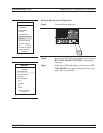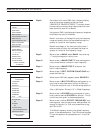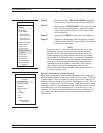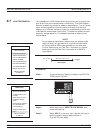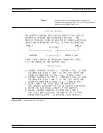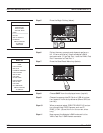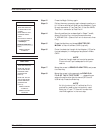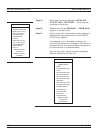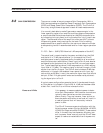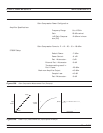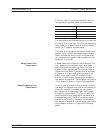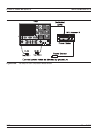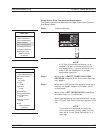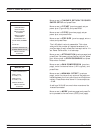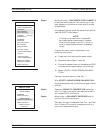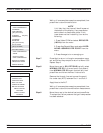
8-8 GAIN COMPRESSION There are a number of ways to measure Gain Compression. With a
VNA two approaches are possible: Swept Frequency Gain Compression
(SFGC) and Swept Power Gain Compression (SPGC). The 37xxxE of
-
fers a very straightforward approach to each of these measurements.
It is normally desirable to make S-parameter measurements in the
linear operating region of an amplifier and then observe Compression
or amplitude-modulation/phase-modulation (AM/PM) characteristics
by increasing the input power to drive the amplifier into it's nonlinear
region. The characteristics of the amplifier-under-test (AUT) dictate
the operating power levels required for the tests. Prior to making
measurements on a specific amplifier the user must determine the de
-
sired operating levels. A recommended level for linear region operation
is:
P = PG – Gain – 15dB (PGC=Nominal l dB compression of the AUT)
The actual level is constrained by the power available from the VNA
and the built in 70 dB step attenuator. (In the case of the 37xxxE,
available power is easily supplemented by the addition of an external
amplifier/attenuator combination.) Power input to Port 2 must also be
considered as the test should not drive the VNA into nonlinear opera-
tion. Typical specifications show 0.1dB compression at a VNA receiver
input level of –10 dBm. The receiver signal is derived through a 13 dB
coupler from the Port 2 signal. The 37xxxE also includes a 40 dB step
attenuator in this path that enables linear operation with input sig-
nals as high as 30 dBm (1 watt), the maximum signal level that should
be input to Port 2. Higher power levels can be measured by attenuat
-
ing the signal prior to Port 2.
A typical power configuration example that will also be used through
-
out this section is included in Figure 8-28. A 10 dB pad has been used
at both Port 1 and Port 2 to minimize mismatch errors.
Power and VNAs It is necessary to measure absolute power to deter
-
mine Gain Compression. VNA receiver channels are
typically down-converters and do not measure
power directly. They are, however, linear so that an
accurate power calibration at one level will result in
a receiver channel that will accurately indicate
power in dBm.
The 37xxxE firmware supports calibration with the
following power meters: Anritsu ML2430A, HP437B,
HP438, and Gigatronics 8541C/8542C. These meters
differ in the way they handle sensor efficiency (con
-
sult the power meter manual), and the 37xxxE does
expect to receive corrected data from the power me
-
ter.
37xxxE OM 8-39
MEASUREMENTS GAIN COMPRESSION



